Abstract
Records of births in Norway in 1967 to 1978 were examined for evidence of an increased risk of Down syndrome associated with older paternal age. From among some 685 000 total births with known maternal and paternal age, 693 cases of Down syndrome were reported to the Medical Birth Registry of Norway. The effect of paternal age was assessed by classifying fathers as young and old on the basis of several definitions. The effect of maternal age was removed by stratifying the data on single years of mothers' age. When fathers were considered young if they were less than or equal to 49 and old if they were less than or equal to 50, the analysis yielded a statistic for the test of a one-sided hypothesis which was significant at the 0.05 level. There appears to be an increase risk (perhaps 20 to 30%) of Down syndrome associated with older fathers, independent of maternal age effect. If this increase does in fact exist, it is much smaller than the increases in risk associated with advancing maternal age, and because older men contribute a relatively small proportion of total births their contribution to the communal burden of Down syndrome is quite small. However, the finding is of aetiological interest and is the first indication of a significant paternal age effect where control for maternal age has been stringent.
Full text
PDF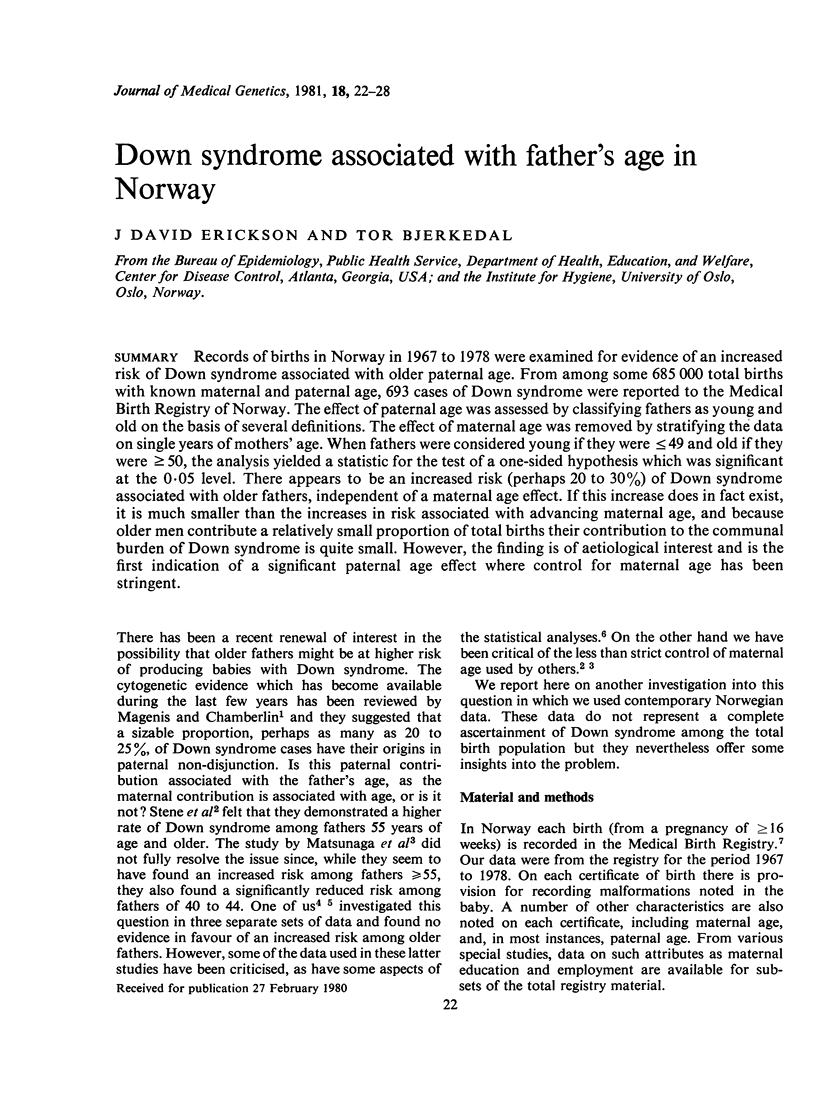
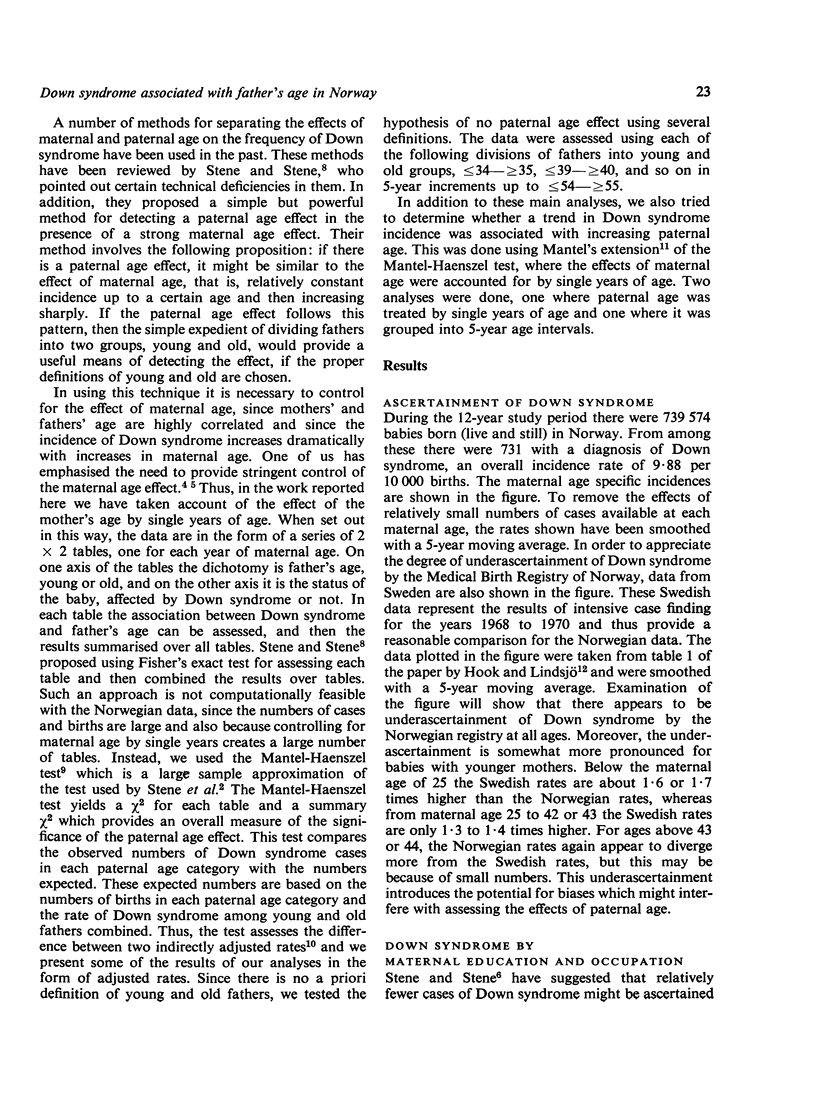
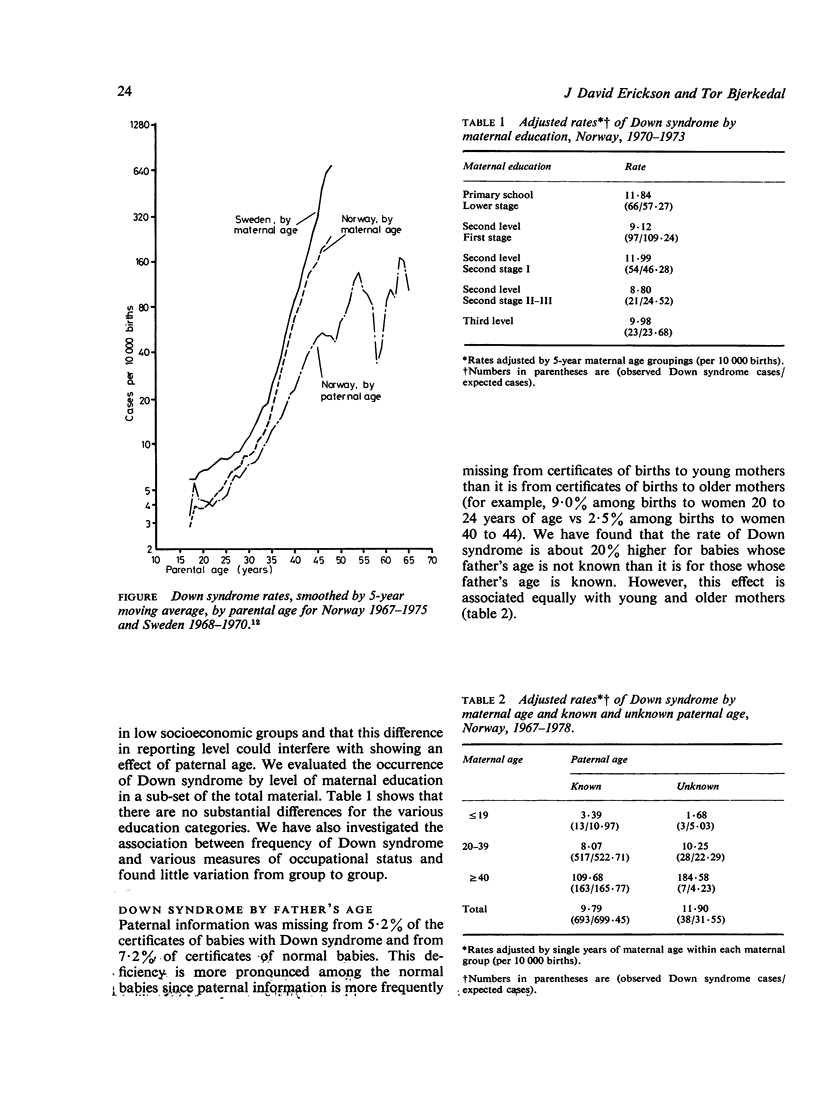
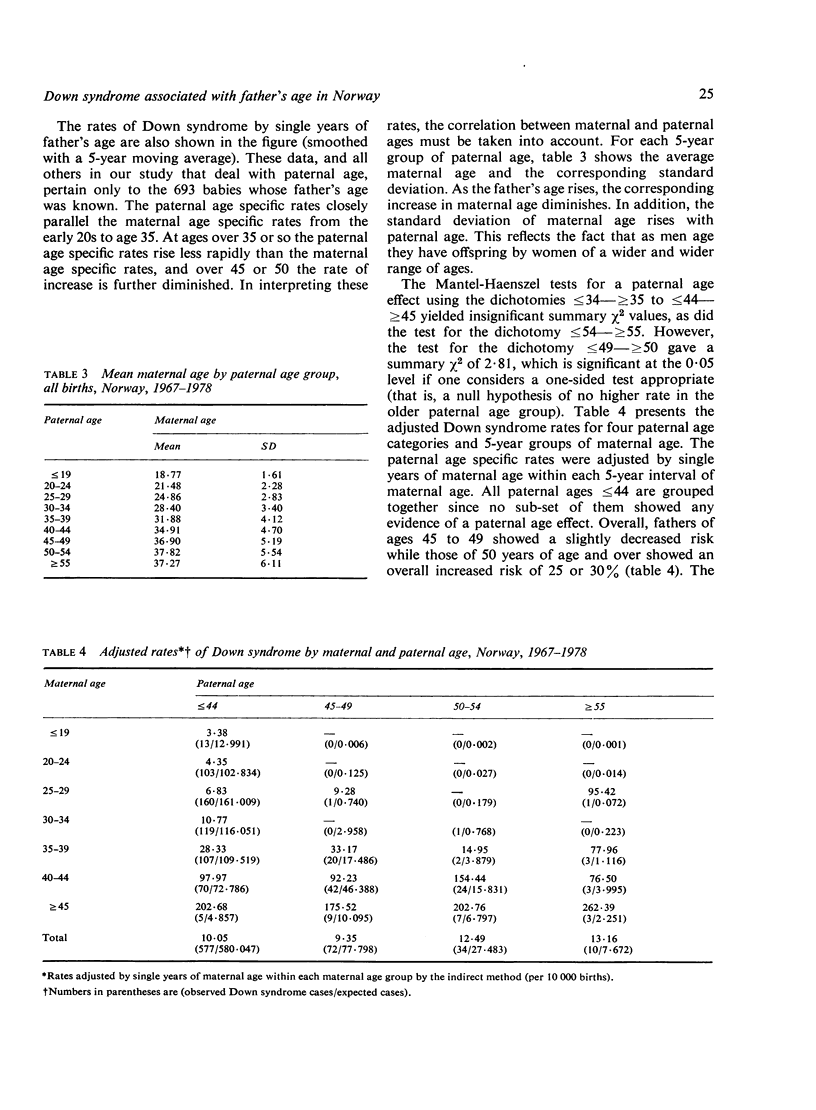
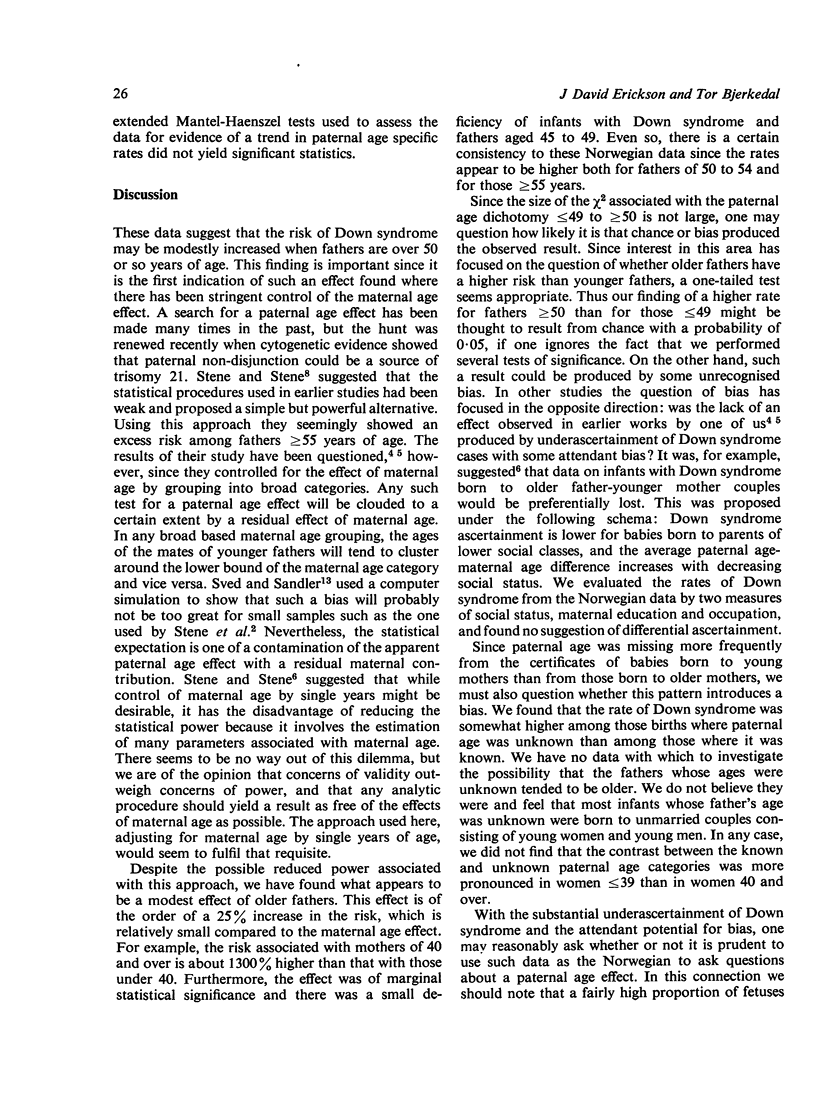
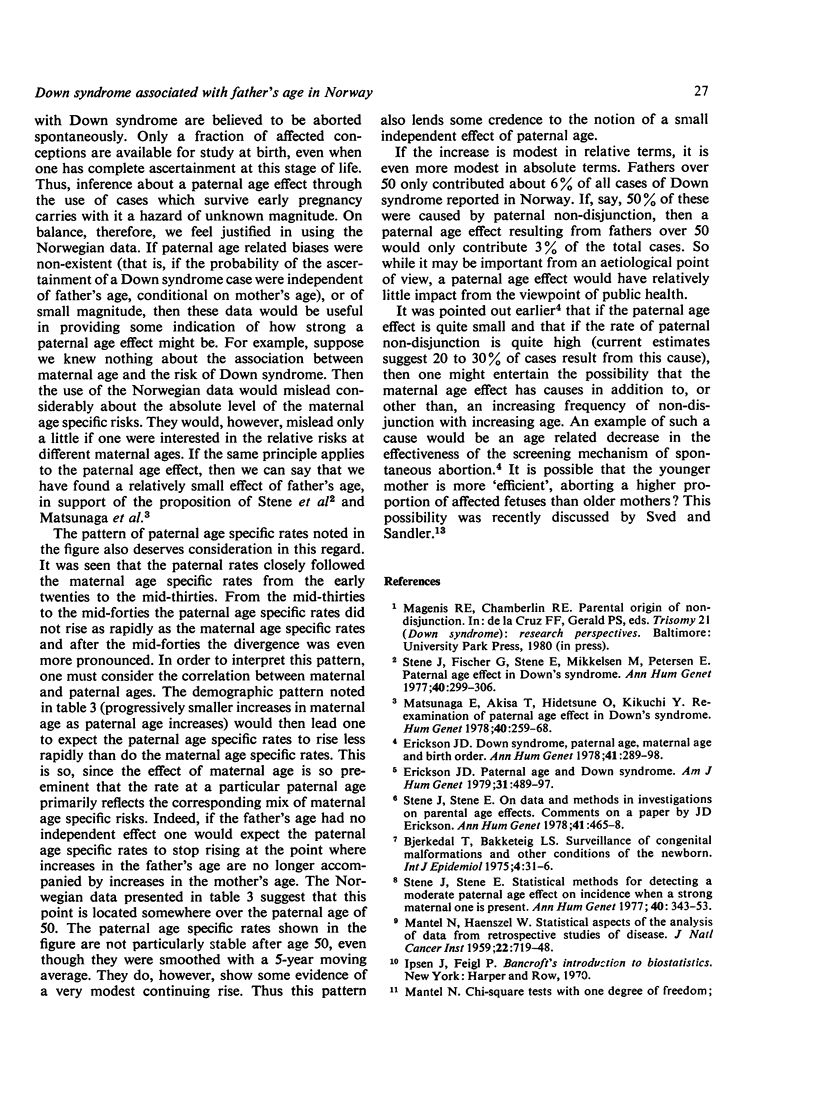
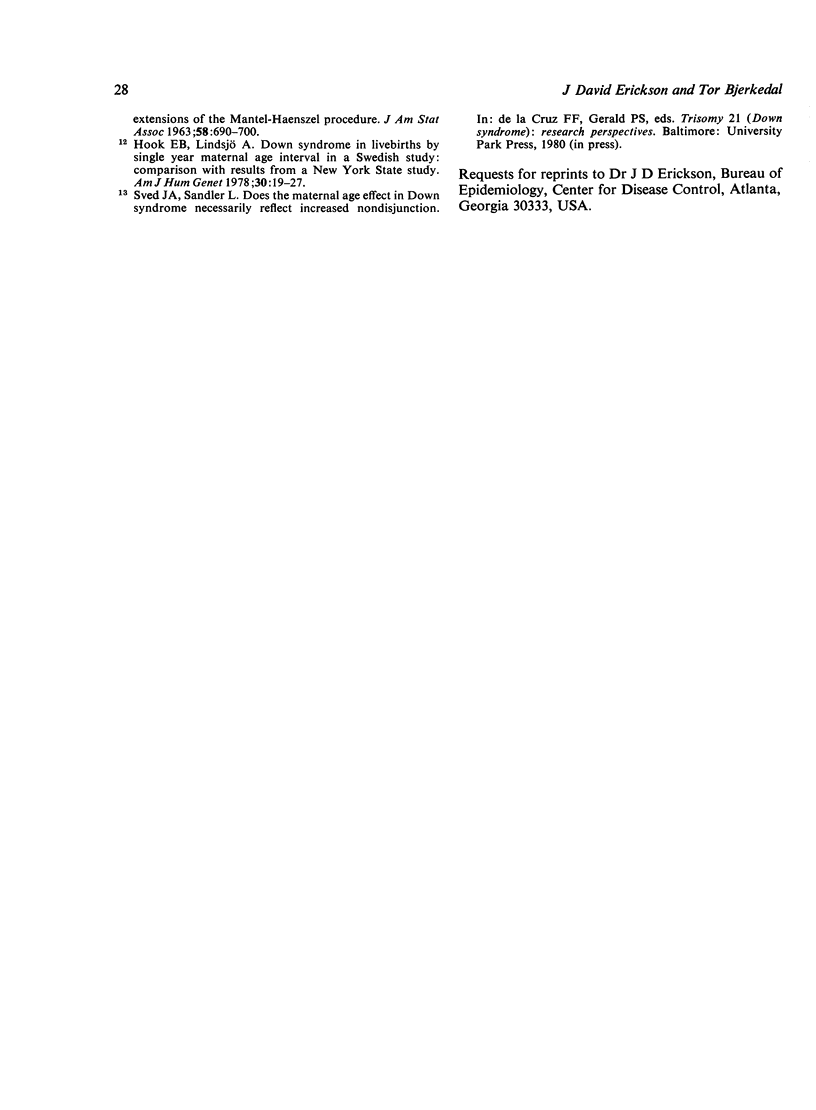
Selected References
These references are in PubMed. This may not be the complete list of references from this article.
- Bjerkedal T., Bakketeig L. S. Surveillance of congenital malformations and other conditions of the newborn. Int J Epidemiol. 1975 Mar;4(1):31–36. doi: 10.1093/ije/4.1.31. [DOI] [PubMed] [Google Scholar]
- Erickson J. D. Down syndrome, paternal age, maternal age and birth order. Ann Hum Genet. 1978 Jan;41(3):289–298. doi: 10.1111/j.1469-1809.1978.tb01896.x. [DOI] [PubMed] [Google Scholar]
- Erickson J. D. Paternal age and Down syndrome. Am J Hum Genet. 1979 Jul;31(4):489–497. [PMC free article] [PubMed] [Google Scholar]
- Hook E. B., Lindsjö A. Down syndrome in live births by single year maternal age interval in a Swedish study: comparison with results from a New York State study. Am J Hum Genet. 1978 Jan;30(1):19–27. [PMC free article] [PubMed] [Google Scholar]
- MANTEL N., HAENSZEL W. Statistical aspects of the analysis of data from retrospective studies of disease. J Natl Cancer Inst. 1959 Apr;22(4):719–748. [PubMed] [Google Scholar]
- Matsunaga E., Tonomura A., Oishi H., Kikuchi Y. Reexamination of paternal age effect in Down's syndrome. Hum Genet. 1978 Feb 16;40(3):259–268. doi: 10.1007/BF00272186. [DOI] [PubMed] [Google Scholar]
- Stene J., Fischer G., Stene E., Mikkelsen M., Petersen E. Paternal age effect in Down's syndrome. Ann Hum Genet. 1977 Jan;40(3):299–306. doi: 10.1111/j.1469-1809.1977.tb00194.x. [DOI] [PubMed] [Google Scholar]
- Stene J., Stene E. On data and methods in investigations on parental-age effects. Comments on a paper by J. D. Erickson. Ann Hum Genet. 1978 May;41(4):465–468. doi: 10.1111/j.1469-1809.1978.tb00917.x. [DOI] [PubMed] [Google Scholar]
- Stene J., Stene E. Statistical methods for detecting a moderate paternal age effect on incidence of disorder when a maternal one is present. Ann Hum Genet. 1977 Jan;40(3):343–353. doi: 10.1111/j.1469-1809.1977.tb00198.x. [DOI] [PubMed] [Google Scholar]


